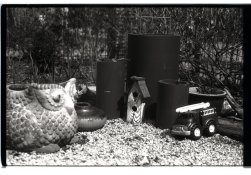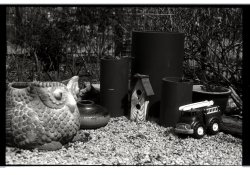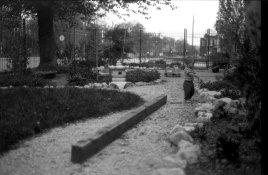I am working on bulk roll of Eastman FGRP 5302.
I shot a roll starting on ISO 6 with a +5 exposure compensation going from:
ISO .1875, to
.375, to
.75 ISO etc up to 100.
.75 looks great developed with HC110 (dilution E, 1:47) for 8 minutes. It really is perfect but I would like to see if the film can be used faster. I am open to another developer, but it calls for D97 whatever that is.
This film has no base fog, it is clear as can be, but I want to know if I can increase developing time to get the speed up a bit. Does it work that way?
I only have one camera that can manage this: Canon EOS 630 which is fine, but I would like the option to shoot with my Nikon FE, F3 or N80, or Canon EF all limited to ASA 12 or 6.
Thanks!
I shot a roll starting on ISO 6 with a +5 exposure compensation going from:
ISO .1875, to
.375, to
.75 ISO etc up to 100.
.75 looks great developed with HC110 (dilution E, 1:47) for 8 minutes. It really is perfect but I would like to see if the film can be used faster. I am open to another developer, but it calls for D97 whatever that is.
This film has no base fog, it is clear as can be, but I want to know if I can increase developing time to get the speed up a bit. Does it work that way?
I only have one camera that can manage this: Canon EOS 630 which is fine, but I would like the option to shoot with my Nikon FE, F3 or N80, or Canon EF all limited to ASA 12 or 6.
Thanks!


















